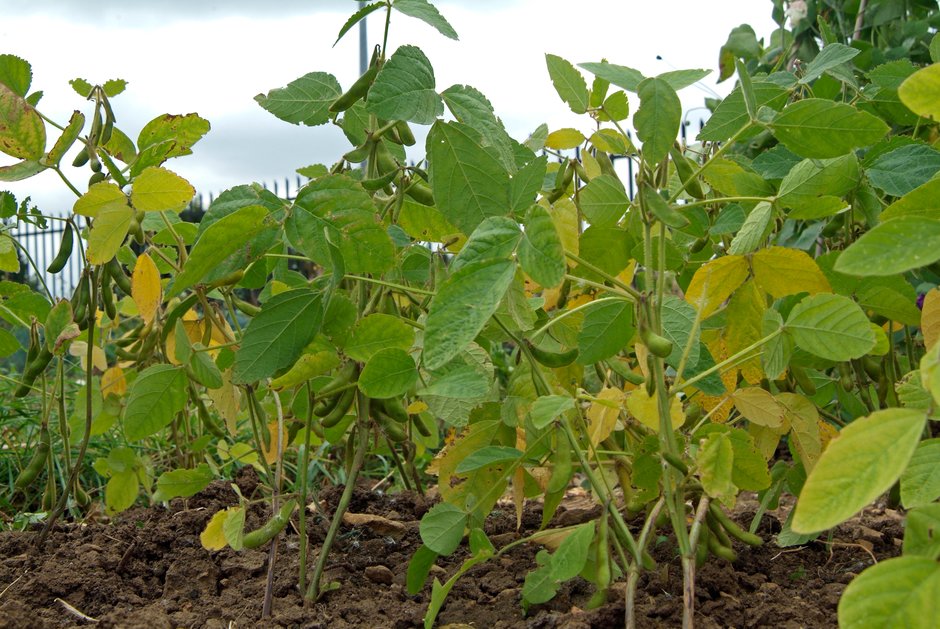Glycine max
soya bean
An upright, bushy annual legume with green foliage and small, insignificant sweet-pea like white to purple-pink flowers which appear from July through to September, followed by clusters of green, hairy fruit pods containing around 3 to 4 soyabeans per pod. Ready to harvest July through to November, when the pods turn yellow and leaves begin to drop
Size
Ultimate height
1.5–2.5 metresTime to ultimate height
1 yearUltimate spread
0.5–1 metresGrowing conditions
Moisture
Moist but well–drainedpH
Acid, Alkaline, NeutralColour & scent
| Stem | Flower | Foliage | Fruit | |
| Spring | Green | |||
|---|---|---|---|---|
| Summer | White Purple Pink | Green | Green Yellow | |
| Autumn | Green | Green Yellow | ||
| Winter |
Position
- Full sun
Aspect
South–facing or West–facing
Exposure
Sheltered Hardiness
H3Botanical details
- Family
- Fabaceae
- Native to GB / Ireland
- No
- Foliage
- Deciduous
- Habit
- Columnar upright
- Genus
A genus of scrambling annual or perennial, best known for the species Glycine max, which is the cultivated soya bean used as a food ingredient. Tall stems produce green foliage and violet-purple to white flowers followed by green seed pods
- Name status
Correct
How to grow
Cultivation
Grow in moist, well-drained humus-rich soil in full sun under glass April to May. Remove cover when seedlings appear and transfer outside to harden off from late May when the risk of frost has passed. Plants may need support in windy areas. Harvest beans when pods turn yellow. For more advice see soya-bean cultivation
Propagation
Propagate by seed
Suggested planting locations and garden types
- City and courtyard gardens
- Cottage and informal garden
- Edible fruit
Pruning
No pruning required
Pests
May be susceptible to caterpillars
Diseases
May be susceptible to bacterial blights, brown spot, anthracnose, downy mildews, powdery mildews and soybean rust, root and stem rots, stem blights and virus diseases
Get involved
The Royal Horticultural Society is the UK’s leading gardening charity. We aim to enrich everyone’s life through plants, and make the UK a greener and more beautiful place.
